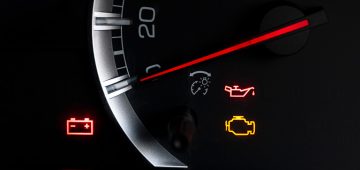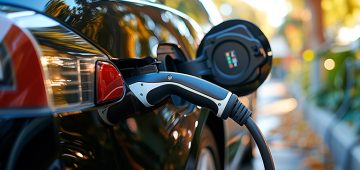Inspection is key to maintaining your vehicle’s health and safety. By conducting a visual inspection on your car, you can uncover hidden issues that may be lurking beneath the surface. From worn-out brake pads to leaking fluids, a thorough visual inspection can help you identify potentially dangerous problems before they escalate. Learn how to perform a simple visual inspection and keep your car running smoothly.
Exterior Inspection
Body and Paint Condition
While conducting a visual inspection of your vehicle’s exterior, one of the key elements to pay attention to is the body and paint condition. An unusually faded or mismatched paint colour could indicate areas that have been recently repaired or repainted. Look for dents, scratches, or signs of rust, which could potentially lead to more serious problems if left unattended.
Tire Wear Patterns
When examining your tires, take note of any unusual wear patterns. Exterior uneven wear can be indicative of improper tire inflation, misaligned wheels, or suspension issues. An overall smooth and uniform wear across all tires is a positive sign of proper maintenance and alignment.
While conducting the tire wear patterns inspection, pay attention to the following:
- Cupping: Indicates issues with suspension or tire balance
- Edge Wear: Suggests improper alignment or underinflation
- Centre Wear: Could be a sign of overinflation or aggressive driving
Under-the-hood Inspection
Engine Belts and Hoses
A necessary part of a visual inspection under the hood is checking the condition of your engine belts and hoses. These belts and hoses are crucial for the proper functioning of your vehicle’s engine. Look for any signs of wear, such as cracks or fraying, and ensure they are properly secured in place. If you notice any issues, it’s best to have them replaced by a professional to prevent any unexpected breakdowns.
Fluid Levels and Leaks
The next crucial step in your visual inspection is checking the fluid levels and looking for any leaks under the hood. Inspect the levels of engine oil, coolant, brake fluid, power steering fluid, and windshield washer fluid. Look for any signs of leaks, which could indicate a problem with the vehicle’s system. Addressing any low fluid levels or leaks promptly can help prevent serious damage to your car.
Fluid levels play a crucial role in the smooth functioning of your vehicle’s systems. Low levels can lead to overheating, poor braking performance, or difficulty steering. Regularly checking and maintaining appropriate fluid levels can help keep your car running smoothly and prevent costly repairs down the road.
Interior Inspection
Dashboard Warning Lights
It is vital to pay attention to your dashboard warning lights, as they can indicate potential issues with your vehicle. Ignoring these lights can lead to more significant problems and costly repairs. Make sure to address any warning lights immediately by consulting your owner’s manual or seeking professional help.
Upholstery and Flooring
Flooring in your car can reveal a lot about its condition. Inspect for any stains, tears, or unusual odours in the upholstery and flooring. These issues can not only affect the aesthetics of your vehicle but also potentially indicate water damage or mould growth. Keep your car clean and well-maintained to prevent any long-term damage.
Another vital aspect of upholstery and flooring is checking for any signs of wear and tear. Over time, constant use can lead to deterioration of the materials, which can impact the comfort and safety of your driving experience. Regularly cleaning and conditioning your upholstery can help extend its lifespan and maintain a fresh look in your vehicle.
Lighting and Visibility
Headlights and Tail Lights
All vehicles rely on their headlights and tail lights for visibility and safety on the road. Any signs of dimming or flickering lights can indicate a problem with the bulbs or electrical system. Cracked or foggy lenses should be replaced to ensure optimum visibility, especially during nighttime driving. Regularly check that all lights are functioning correctly to avoid potential accidents due to reduced visibility.
Windshield and Wipers
Headlights are not the only components vital for visibility; a clear windshield and functioning wipers are also crucial for safe driving. Any visibility obstruction caused by cracks, chips, or debris on the windshield should be addressed immediately. Worn-out or squeaky wipers are signs that they need replacing, as they may not effectively clear water or debris, compromising visibility in adverse weather conditions.
For instance, a cracked windshield can obscure the driver’s view and compromise the structural integrity of the vehicle in the event of a collision. Regularly inspecting and replacing worn-out wipers and addressing any windshield damage can significantly improve visibility and safety on the road. Make sure the windshield washer fluid reservoir is filled to ensure a clear view at all times.
To wrap up
In short, conducting a simple visual inspection of your car can help you identify sneaky problems before they turn into major issues. By checking for leaks, uneven tire wear, and unusual engine noises, you can potentially save time and money on costly repairs down the line. Remember to regularly inspect your vehicle and address any concerns promptly to ensure your car stays in top condition and keeps you safe on the road.
FAQ
Q: What are some sneaky car problems that can be diagnosed with a simple visual inspection?
Some sneaky car problems that can be diagnosed with a simple visual inspection include uneven tire wear, leaking fluids, and rust spots.
Q: How can I detect uneven tire wear during a visual inspection of my car?
A: You can detect uneven tire wear by visually inspecting the surface of each tire. Look for signs of wear that are uneven across the tire tread, such as bald spots or excessive wear on one side of the tire.
Q: What should I look for when checking for leaking fluids during a visual inspection of my car?
A: When checking for leaking fluids, look under the hood and underneath the car for any puddles or stains. Different coloured fluids can indicate different issues; for example, red fluid may be transmission fluid, while green or orange fluid may indicate a coolant leak.






